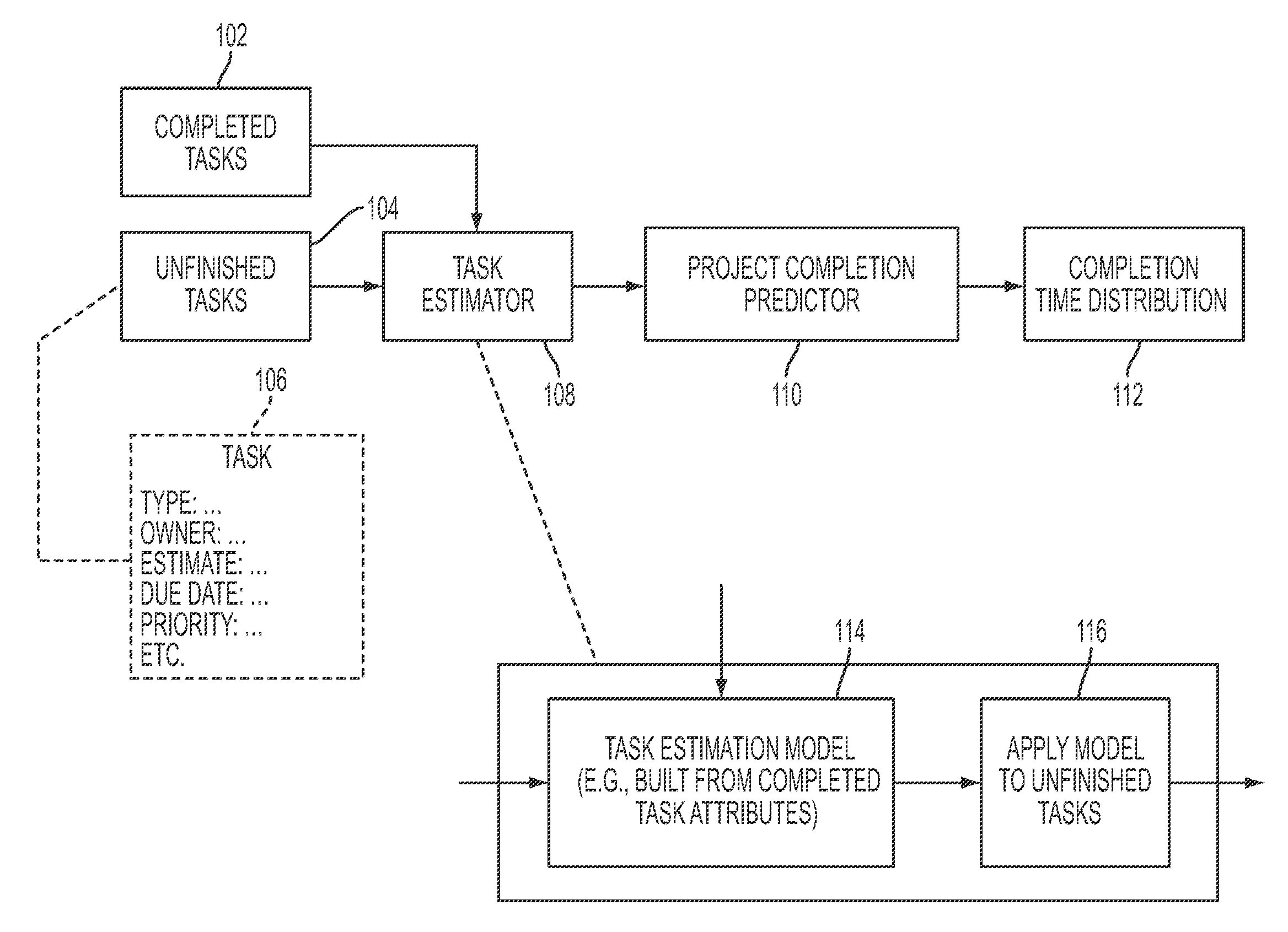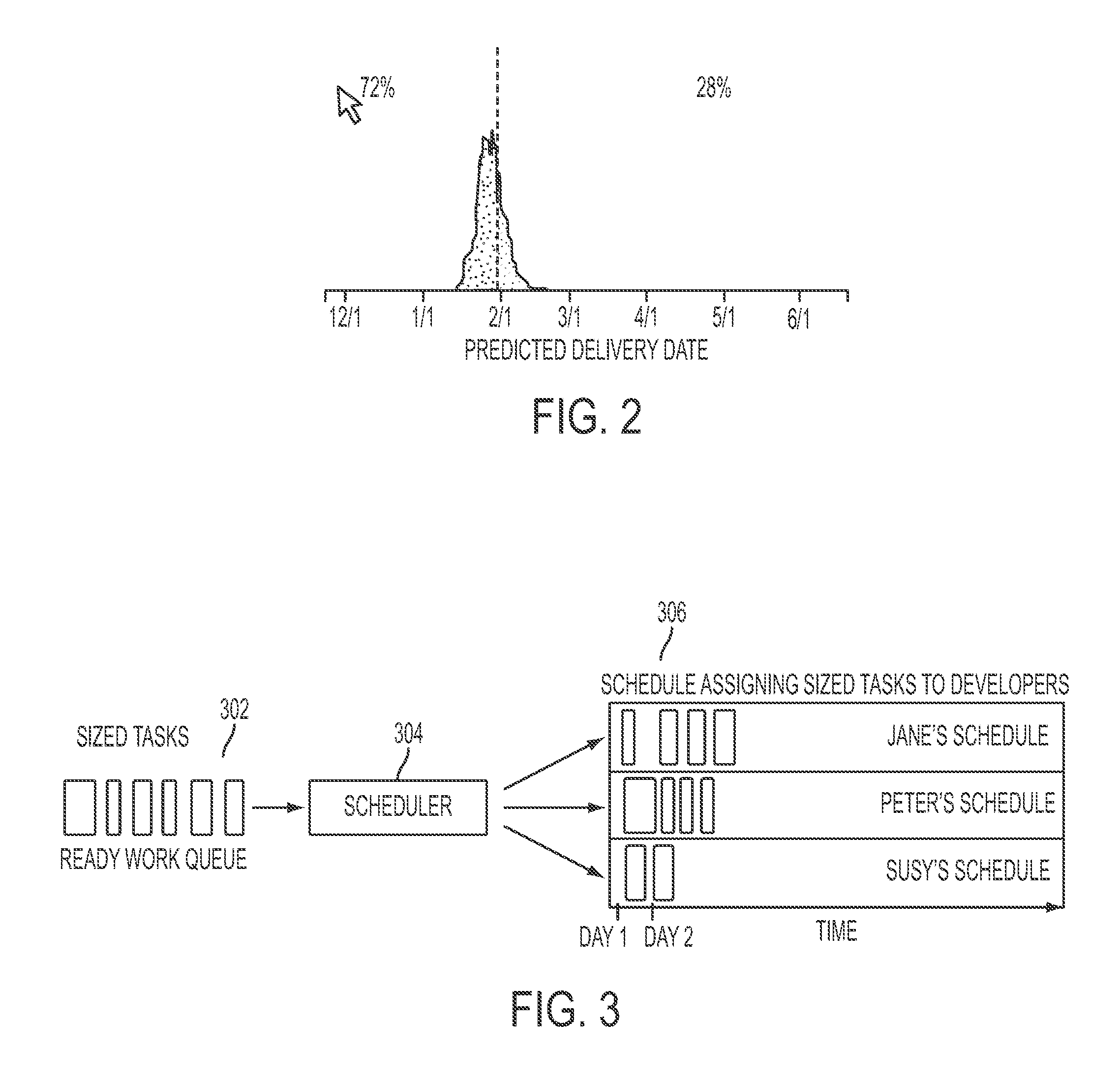Predicting likelihood of on-time product delivery, diagnosing issues that threaten delivery, and exploration of likely outcome of different solutions
a technology of product delivery and probability, applied in the field of computer implementation, can solve problems such as the breakdown of standard project estimation methods, the inability to predict the probability of on-time product delivery, and the inability to accurately estimate the total effort required or time to completion, and the inability to use the resources available for the proj
- Summary
- Abstract
- Description
- Claims
- Application Information
AI Technical Summary
Benefits of technology
Problems solved by technology
Method used
Image
Examples
Embodiment Construction
[0026]An answer to the difficulty of estimating software projects is the approach of empirical process control. Traditional methods of process control for software development make use of defined processes in which development activities are specified in advance and the project is expected to follow a planned course. Empirical process control, in contrast, relies on the frequent empirical assessment (and reassessment) of project status and operating conditions. It is intended to enable a project to adapt dynamically to changes in status and operating conditions, thereby allowing outdated plans and expectations to be replaced by new ones that are more attuned to changed circumstances.
[0027]In one embodiment of the present disclosure, a methodology may be presented that proposes an empirical approach to project estimation that is compatible with empirical process control. The methodology of the present disclosure may be applied to empirically controlled projects in which assumptions a...
PUM
 Login to View More
Login to View More Abstract
Description
Claims
Application Information
 Login to View More
Login to View More - R&D
- Intellectual Property
- Life Sciences
- Materials
- Tech Scout
- Unparalleled Data Quality
- Higher Quality Content
- 60% Fewer Hallucinations
Browse by: Latest US Patents, China's latest patents, Technical Efficacy Thesaurus, Application Domain, Technology Topic, Popular Technical Reports.
© 2025 PatSnap. All rights reserved.Legal|Privacy policy|Modern Slavery Act Transparency Statement|Sitemap|About US| Contact US: help@patsnap.com



